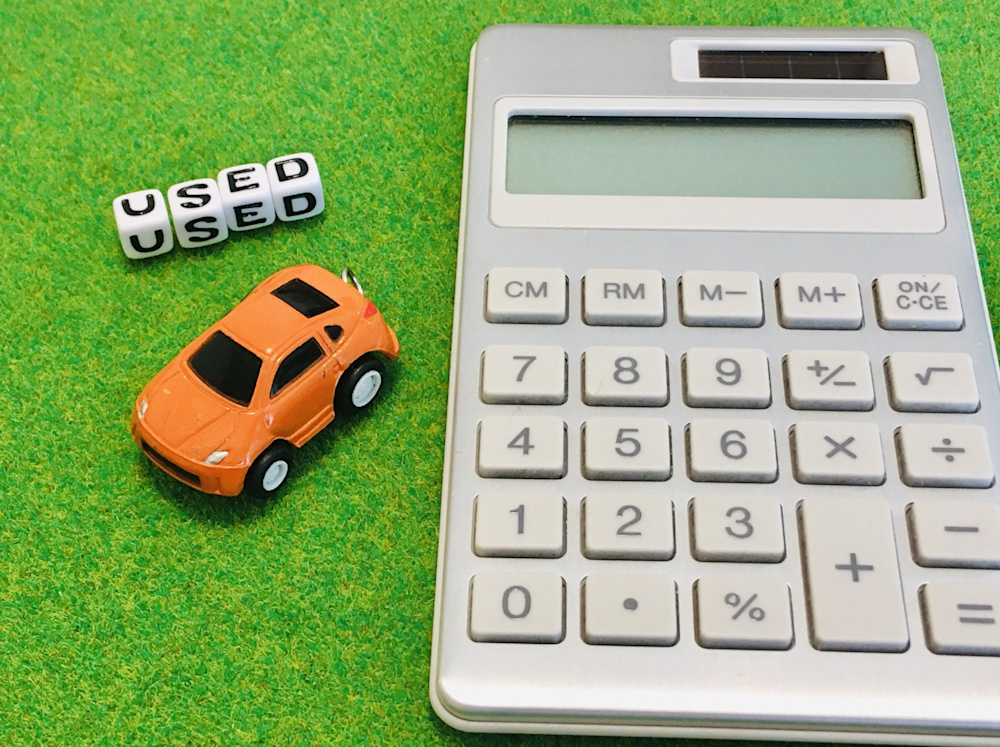Updated October 27, 2025
How to Buy a Car in Japan [2025 Guide]
Living in Japan without a car works just fine, especially in major cities where public transport runs like clockwork.
However, if you’re planning to explore the countryside, live outside urban centers, or simply want the freedom of having your own wheels, you need to know how car ownership and rentals work in Japan.
This guide covers everything about buying your first car in Japan and renting vehicles as a foreigner. We’ll also discuss car-sharing services for those who prefer short-term options.
How to Buy a Car in Japan as a Foreigner
Buying a car in Japan involves dealing with paperwork, parking requirements, and ongoing costs. Let’s break down what you need to know before making this commitment.
New Car vs Used Car: Which Should You Choose?
This age-old debate has good arguments on both sides, and Japan offers quite compelling options for both.
New cars come with full warranty coverage and the latest technology, plus you’ll be the first owner, which means there’s no mystery about the vehicle’s history.
The downside is that new cars are expensive and depreciate quickly.
Used cars, on the other hand, are significantly more affordable, and Japan’s used car market is known for high-quality vehicles.
These cars have proven their reliability over time, and depreciation has already taken its toll on the previous owner, not you. However, you’ll need to budget for maintenance and possibly repairs, and the remaining warranty coverage will be limited or nonexistent.
Another thing to consider is that vehicle taxes increase significantly once a car hits the 10-year mark, so you might have to factor this into your long-term costs.
Both options are valid: New cars suit those planning long-term stays and want peace of mind, while used cars make sense for shorter stays or tighter budgets.
Choosing Your Car Brand
It’s no secret that Japan is home to some of the world’s most trusted automotive manufacturers.
Toyota leads the pack and remains the best-selling brand globally, with the Corolla holding the most-sold car title for 15 consecutive years.
Honda, Nissan, Mazda, Subaru, and Mitsubishi are other big players in the mass market, and they’re all known for their reliability and affordability.
If you’re looking for something more upscale, Japan also produces luxury brands.
Lexus (Toyota’s luxury division) competes directly with Mercedes-Benz and BMW. Acura (Honda) and Infiniti (Nissan) are other luxury options, though interestingly, Acura has never been sold in Japan, and Infiniti has limited availability domestically despite being quite popular overseas.
Kei Cars (軽自動車) vs Regular Cars (普通車): Understanding Your Options
One of Japan’s most distinctive vehicle categories is the Kei car.
Kei cars are these tiny, boxy vehicles you see pretty much everywhere in Japan. These cars must meet strict size, weight, and engine capacity limits, making them roughly the size of a classic Mini Cooper, but taller.
They’re limited to four seats and typically have engines under 660cc. This makes them especially popular among the elderly and students.
The benefits of Kei cars are undeniable: Lower purchase prices, reduced insurance costs, and cheaper vehicle taxes. In addition, you even have access to special kei-only parking spaces.
They’re surprisingly practical too, with clever interior design maximizing space despite their small footprint. Many Kei cars seat four adults comfortably and can haul impressive amounts of cargo with the rear seats folded down.
However, like we said, Kei cars aren’t for everyone.
Performance is limited, especially on highways where steep hills can be challenging. The smaller engines work hard at highway speeds, leading to increased noise.
If you’re planning long-distance travel or have a larger family, a regular-sized car might suit you better. But for city driving and occasional weekend trips, a Kei car is hard to beat for value and practicality.

What Documents Do You Need to Buy a Car?
Before heading to a dealership, gather these important documents.
The Essentials: Residence Card, Driver's License, Hanko
For any car purchase, you’ll first need your residence card and a valid driver’s license. If you don’t have a Japanese license yet, check out our guide on how to get your driver’s license in Japan or consider attending a driving school in Japan.
You’ll also need a personal seal, known as an inkan or hanko. For car purchases, this isn’t just any stamp: You need a registered jitsu-in (real seal) that matches your name exactly as it appears on your residence card.
Keep in mind that this seal needs to be registered at your local ward office, and you also need to obtain an inkan shomeisho (seal certificate). This is such an important part of living in Japan that we have a dedicated guide about hanko stamps, so check it one out if you have questions.
Parking Space Certificate and Other Documents
Another necessary document is the parking space certificate.
This certificate (shako-shomeisho) is unique to Japan and is absolutely mandatory. You need it to prove you have a designated parking space within two kilometers of your home.
This involves getting documentation from your parking lot provider, then taking it to the police station to obtain the official certificate. The process takes time, so we recommend starting early.
For Kei cars, you’ll also need a resident certificate from your ward office. As for regular cars, you’ll need a registered personal seal certificate in addition to the other documents.
Finally, if the dealer you’re purchasing your car from handles paperwork on your behalf, they’ll also provide a power of attorney form for you to sign.
Understanding the Costs of Car Ownership in Japan
Car ownership in Japan comes with ongoing expenses that can catch newcomers off guard. The single biggest recurring cost is the mandatory vehicle inspection, known as shaken (車検).
Required by law every two years for most vehicles (three years for brand-new cars), shaken ensures your vehicle remains fit for the road.
The full inspection covers everything from brake function to emissions, and costs typically range from 70,000 to 150,000, depending on your vehicle’s type and age.
If your car fails inspection, you’ll need to pay for repairs before receiving your new sticker. Driving without a valid shaken sticker results in penalties, so mark your calendar carefully.
Parking is another major expense, especially in urban areas. In Tokyo’s 23 wards, monthly parking can easily exceed 50,000, though suburban areas are more reasonable at around 10,000 monthly. Remember, you need this secured before you can even buy the car.
Taxes, Additional Cost, and Vehicle Insurance in Japan
In addition to the above, you also have the taxes.
Vehicle taxes include car tax (based on engine size), car weight tax, and an environmental performance rate.
Insurance comes in two forms: the mandatory liability insurance (jibaiseki hoken) covered during shaken, and optional comprehensive insurance.
The mandatory insurance only covers bodily injury to others, not property damage, your own injuries, or your vehicle. Given Japan’s high repair costs and potential compensation claims, most people opt for comprehensive coverage.
For detailed information about insurance options, read our guide on expat car insurance in Japan.
Finally, don’t forget the additional regular costs such as fuel, highway tolls (most expressways charge fees), and regular maintenance. While cars in Japan are relatively affordable to purchase compared to many countries, the total cost of ownership can be significant. So, plan your budget accordingly.
How to Rent a Car in Japan for Foreigners
Renting a car offers flexibility without the long-term financial burden. It’s particularly useful for tourists, short-term residents, or anyone who only needs a vehicle occasionally.
Major Rental Car Companies
Japan has several national rental car chains with locations throughout the country. Toyota Rent a Car, Nissan Rent a Car, and Times Car Rental (formerly Mazda Rent-a-Car) are among the largest, each operating hundreds of outlets.
Orix Rent-A-Car, Nippon Rent-A-Car, and Budget Rent-A-Car are the other major players you’ll see around Japan.
These companies typically offer English reservation systems online or phone support in English, making the process relatively straightforward for expats who don’t speak Japanese yet.
Rates vary by vehicle size and season, but expect to pay around 7,500 per day for a compact car, 10,000 for mid-sized vehicles, 15,000 for full-sized cars, and 20,000 or more for vans. During certain peak seasons in certain locations, such as in Hokkaido, the rates can get even more expensive.
An interesting option many companies now offer is long-term rental programs, where you can eventually purchase the vehicle after a certain period. This gives you time to test-drive ownership before fully committing.
Many major rental companies offer the rent-to-own option, so check with the individual company to be sure.

Requirements for Renting a Car: How Old To Rent a Car in Japan?
To rent a car in Japan, you must be at least 18 years old with a valid driver’s license. However, some rental companies may impose their own age restrictions, requiring renters to be 20 or 21, so check beforehand.
Foreign visitors can drive using an International Driving Permit (IDP) based on the 1949 Geneva Convention. These permits are valid for one year in Japan, but must be obtained in your home country before arrival, as Japan doesn’t issue them.
It’s important to note that several European countries (Belgium, France, Germany, Monaco, Switzerland) and Taiwan don’t use the Geneva Convention format. So, drivers from these countries need an official Japanese translation of their license instead, which is available through the Japan Automobile Federation (JAF).
When picking up your rental, bring your valid driver’s license or IDP, passport, and a credit card for payment and deposit.
Keep in mind that most companies require credit cards and won’t accept cash for the deposit.
What Is Car Sharing in Japan?
Car sharing operates differently from traditional rentals. Think of it as rental cars on demand.
These are membership-based services that let you book vehicles by the hour (or even by 15-minute increments) at parking stations throughout cities. Thanks to this convenience, these cars are available 24/7.
The system works through membership registration. You need a Japanese driver’s license (international permits aren’t accepted), a credit card, and a mobile phone.
Some services charge monthly fees of around 1,000 yen, while others are free to join. Rates typically range between 165 to 400 yen per 15 minutes for short-term use, with package deals for longer periods.
The beauty of car sharing is the convenience. Gas costs and insurance are included in your fee, so no extra costs to worry about.
You simply unlock the cars using a membership card or smartphone app. When you’re done, simply return the car to the same station where you picked it up.
No need to refill the tank either, as there’s a gas card in the vehicle if you need to fuel up during your trip.
Popular Car Sharing Companies
Just like with long-term rentals, you also have multiple options here.
Times Car Share is one of Japan’s largest operators, with stations throughout Tokyo and other major cities. Orix Car Share offers similar services with competitive pricing. Other options include Cariteco and Mitsui Fudosan Realty, as well as various smaller regional providers.
The only catch is that the car must be returned to the same station where you picked it up, making car sharing best for round trips rather than one-way travel.
Also, the number of vehicles at each station is limited, so booking ahead is a must during busy times.
Things to Know Before You Start Driving in Japan
Hitting the road in Japan comes with some unique rules and customs you’ll need to understand.
Required Stickers on Your Car
You’ve probably noticed various colored stickers on cars throughout Japan. Some are optional, but others are legally required, and driving without them can result in fines and even points on your license.
The beginner’s mark (shoshinsha mark or wakaba mark) looks like a green and yellow leaf. It’s mandatory for one year after obtaining your license, displayed on both the front and back of your vehicle. Forget this sticker and you’ll face citations.
The hearing-impaired person mark, featuring a yellow and green butterfly design, must be displayed by drivers who are hard of hearing or deaf. This requirement also results in penalties if not followed.
The senior driver sticker (a four-leaf clover design) is recommended for drivers over 70 and mandatory for those over 75.
The handicapped driver sticker (showing a four-leaf clover with a wheelchair) is voluntary for drivers with physical disabilities.
These stickers serve an important purpose beyond legal compliance. They signal to other drivers to exercise extra caution and patience around these vehicles.

Parking Etiquette and Rules
Parking in Japan follows some unwritten rules that locals take seriously.
Here’s the most important part: Always reverse into parking spaces. This isn’t just a preference, but the expected norm.
Japanese drivers anticipate cars pulling forward out of spaces, not backing out. Parking lots are tight, and backing in gives you better visibility when leaving, making it safer for everyone.
Finding parking varies dramatically by location. Tokyo and other major cities charge premium rates. Expect several hundred yen to a couple of thousand yen per hour in city centers. Suburban areas and smaller towns offer cheaper or even free parking, while tourist attractions often charge flat fees of 200 to 500.
Disabled parking spaces exist but are strictly for permit holders. Unlike some countries where people might casually use these spots, Japan takes accessibility seriously. Each prefecture issues parking permits for disabled drivers, and these spaces are reserved exclusively for those with legitimate needs.
Pay attention to parking signs. Blue circular signs with “P” indicate parking areas, while blue circles with red crosses mean no parking. Round signs with time limits specify how long you can park. Monthly rental spaces are marked “tsukigime” (月極) and are off-limits unless you’re renting them.
Conclusion on How to Buy a Car in Japan
Whether buying, renting, or using car-sharing services in Japan, each option offers distinct advantages depending on your situation.
Buying a car makes sense for long-term residents, especially those living outside major cities where public transport is less convenient. The upfront costs and ongoing expenses are significant, but for many, the freedom and convenience justify the investment.
Rental cars provide flexibility for occasional needs, weekend trips, or exploring rural areas where trains don’t reach. They’re ideal for newcomers still deciding if they need a car long-term.
Car sharing splits the difference, offering the convenience of having a car available when needed without the commitment of ownership or even daily rental rates.
Whatever route you choose, understanding Japan’s unique requirements, such as shaken inspections, parking certificates, and driving stickers, will help you navigate the process smoothly.
The roads in Japan are well-maintained, and drivers are generally courteous, so all you need to do is drive safely, follow the rules, and enjoy the journey.
Get Job Alerts
Sign up for our newsletter to get hand-picked tech jobs in Japan – straight to your inbox.








